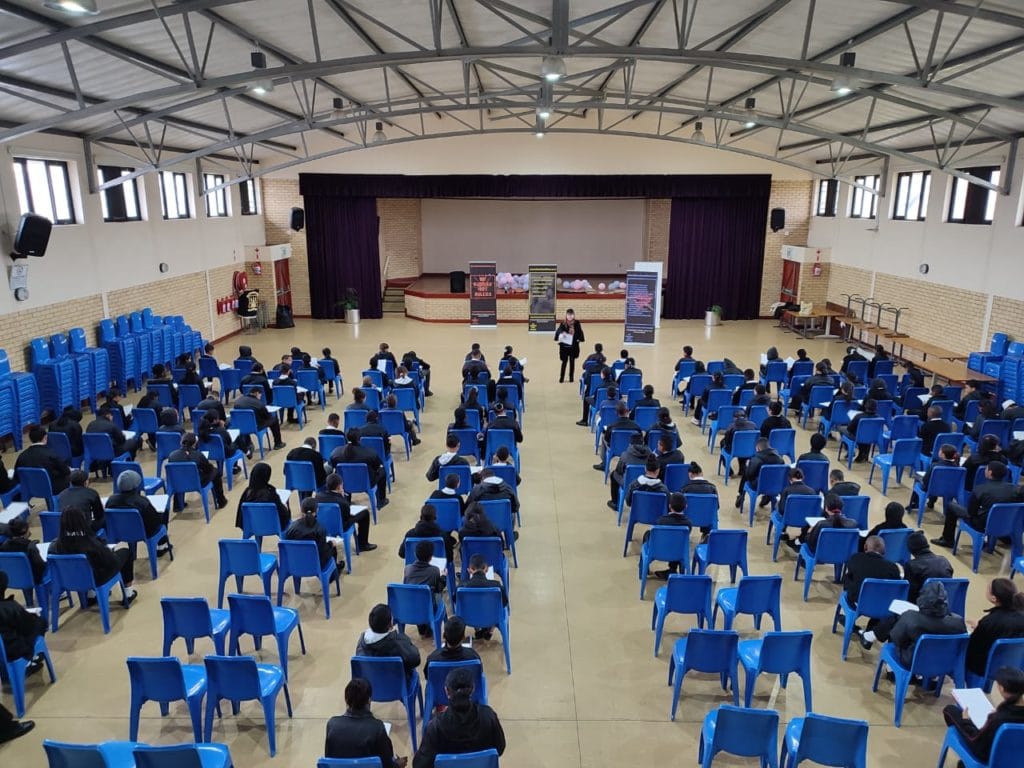
Conducted, managed and edited by Dr Brenda Matthews
Analysis prepared by Craig Christian
Date issued 26 January 2023
A Summary of Schools that participated in 2022 Matthews Bully/Victim Assessment
During 2022 Dr Matthews conducted her Bully Assessment at the below-mentioned Western Cape primary and high schools. Primary School grades 4 to 7 participated in the assessment as lower grades do not have the social and cognitive ability to recognise bullying behaviour. Then to, due to matric exam preparation priorities only grades 8 to 11 participated in the assessment.
Participating schools
| Primary Schools | High Schools |
| 1. Balvenie, Elsie’s River | 5. Kensington |
| 2. Kenmere, Kensington | 6. Strandfontein |
| 3. Kerria, Atlantis | |
| 4. Westville, Mitchell’s Plain |
The background of the learner participants
1815 primary school participants completed the assessment with 48% female and 52% male representation. Grade 4 had the majority representation.
1183 high school participants completed the assessment with 49% male and 51% female representation. Grade 8 had the majority representation. It is noteworthy to mention the decline in learner numbers from grade 8 to grade 11. It was however not in the scope of the assessment to provide a possible reason for this decline in numbers.
The majority of participants reside with both parents or one of the parents.
Multiple responses were received to the question,“ How many people live with you?” The data provided through the response to this question gave evidence to support 55% of primary and 42% of high school participants residing with 5 or more people at home.
Participants were asked, “How do they like school?”. 27% (478) primary school and 61% (738) high school participants’ responses provided some degree of dislike.
| Note that the answer,“ I neither like nor dislike school”, was assumed to infer a presence of dissatisfaction. |
The period, the types of bullying
21%(335) of primary and 4% (51) of high school participants indicated that bullying occurred twice a month to many times a week. The evidence also presents that bullying occurs mostly in lower grades.
23% of primary school and 21% of high school bullied participants indicated that the bullying lasted for 6 months or more.
Assessment participants indicate that the most frequent types of bullying are:
- Being called names or teased,
- Others tell lies or untrue stories about the victim,
- Name-calling and racism,
- Victims being left out of group activities on purpose,
- Social media harassment,
- Things were taken away or vandalised.
These types of bullying were experienced by significantly more boys than girls. And more so in primary school than in high school.
The characteristics of learners affected by bullying
It is noteworthy that 33% of primary school and 28% of high school assessment participants indicated that they were afraid of being bullied by other learners in the school.
Primary and high school participants’ responses suggested that most of the learners affected by bullying:
- live with both parents or a combination of relatives and parents,
- resided in households that have a residency of between 2 and 7,
- and have groups of friends at home and school.
The characteristics of bullies
The evidence suggests that:
- boys tend to be the main perpetrators of bullying at both primary and high schools,
- bullying is mostly conducted by a group of learners. (This finding of group bullying behaviour supports similar findings in research conducted by A. Juan et al. 2018).
It is noteworthy that learners also identified adults to be the perpetrators of bullying.
These findings should raise awareness that there may be many factors linked to why perpetrators bully. Factors such as
- The environmental impact caused by physical violence in the media,
- The social impact of trauma experienced in dysfunctional families,
- The impact of the bystander who could be passive, which condones the bullying incident or can prevent others from intervening,
- The individual impact bullies have been reported as being low in empathy and therefore not being sensitive to the plight of others and are seen to be cool or domineering (Counselling Connection,2020).
Locations of bullying
Assessment responses show that the most common place where bullying occurred at both primary and high occurred in the classroom and on the playground. Other places of bullying are provided in the two graphs below.
Peer Reaction
Primary school and high school had very similar responses of 88% and 86% from the respective participants who indicated that they would feel sorry for the bullied victim. There were, however, participants who indicated that the victim deserved to be bullied. Some other learners’ responses to bullying were as follows:
- Joining in or participating in the bullying,
- Reporting the incident to a teacher,
- Doing nothing,
- Attempting to stop the bully by resorting to violence.
There seems to be a varied approach by learners when assisting a bullied victim. In this regard some learners indicated that they would:
- try and assist the victim by telling a teacher,
- confront the bully verbally (and as previously mentioned on occasions with violence).
Disclosure and adult Intervention
62% of primary and 57% of high school bullied learners indicated that they had informed somebody. Further to this 54% of primary school and 50% of high school bullied learners told an adult.
However, only 50% of informed primary school adults and 34% of informed high school adults contacted the school.
With regard to teacher intervention at primary school, 62% of responses reflected that teachers did a lot to stop bullying in comparison to only 45% at high schools.
Conclusion
The assessment findings suggest that bullying is more prominent in primary schools. It also suggests the victims of bullying and perpetrators of bullying are most prominent within the lower grades of both primary and high schools (i.e. grade 4 and grade 8). It is noteworthy that 33% of primary school and 28% of high school assessment participants indicated that they were afraid of being bullied by other learners in the school.
Research by A. Juan et al. (2018) is supported by the finding that boys tend to be the most prominent perpetrators of bullying and that this behaviour is usually carried out by groups of learners. A noteworthy finding is that some learners perceived adults at school and home to be perpetrators of bullying.
Most bullied learners indicated that they have a significant family and friendship structure. Academic research suggested that a strong social structure should be supportive of reducing bullying behaviour. However, negative environmental, social and individual (Counselling Connection 2020) factors increase the propensity for bullying behaviour. The result of these negative factors could be associated with findings of prominent bullying behaviours such as:
- Being called names or teased,
- Others tell lies or untrue stories about the victim,
- Name-calling and racism.
The evidence from the assessment also supports Yoselisa et al, 2016 research findings that showed a significant amount of bullying occurred in the classroom, school corridors, and school playgrounds. Primary, school participants, however, indicated that bullying behaviour is quite prevalent at home or on playgrounds at home.
62% of primary and 57% of high school bullied learners indicated that they had informed somebody. Further to this, 54% of primary school and 50% of high school bullied learners told an adult. However, only 50% of informed primary school adults and 34% of informed high school adults contacted the school. In this respect, only 62% of primary and 45% of high school learners thought that teachers did enough to stop bullying at school.
The above finding suggests that there seems to be overall uncertainty about what to do when assisting a bullied learner or how to manage a perpetrator of bullying.
The evidence provided in the assessment does however suggest that intervention is required regarding the awareness of what constitutes bullying, the prevention of bullying and the policy and procedure relating to the communication, reporting and management of bullying at the schools that participated in the assessment. These interventions should be extended to all stakeholders that have an indirect and direct responsibility for the safety of learners at the schools.
References
Counselling Connection (2020): Online at, https://www.counsellingconnection.com/index.php/2011/11/03/what-causes-school-bullying/ Accessed 26 Jan 2022
A.Juan et al. (2018): South African Journal of Education, Volume 38, Supplement 1, October 2018; Online at: https://files.eric.ed.gov/fulltext/EJ1198841.pdf; Accessed 26 Jan 2023
Yoselisa et al (2016): Bullying experience in primary school children; Available online : https://www.researchgate.net/publication/312664174_Bullying_experience_in_primary_school_children: Accessed 9 September 2020





